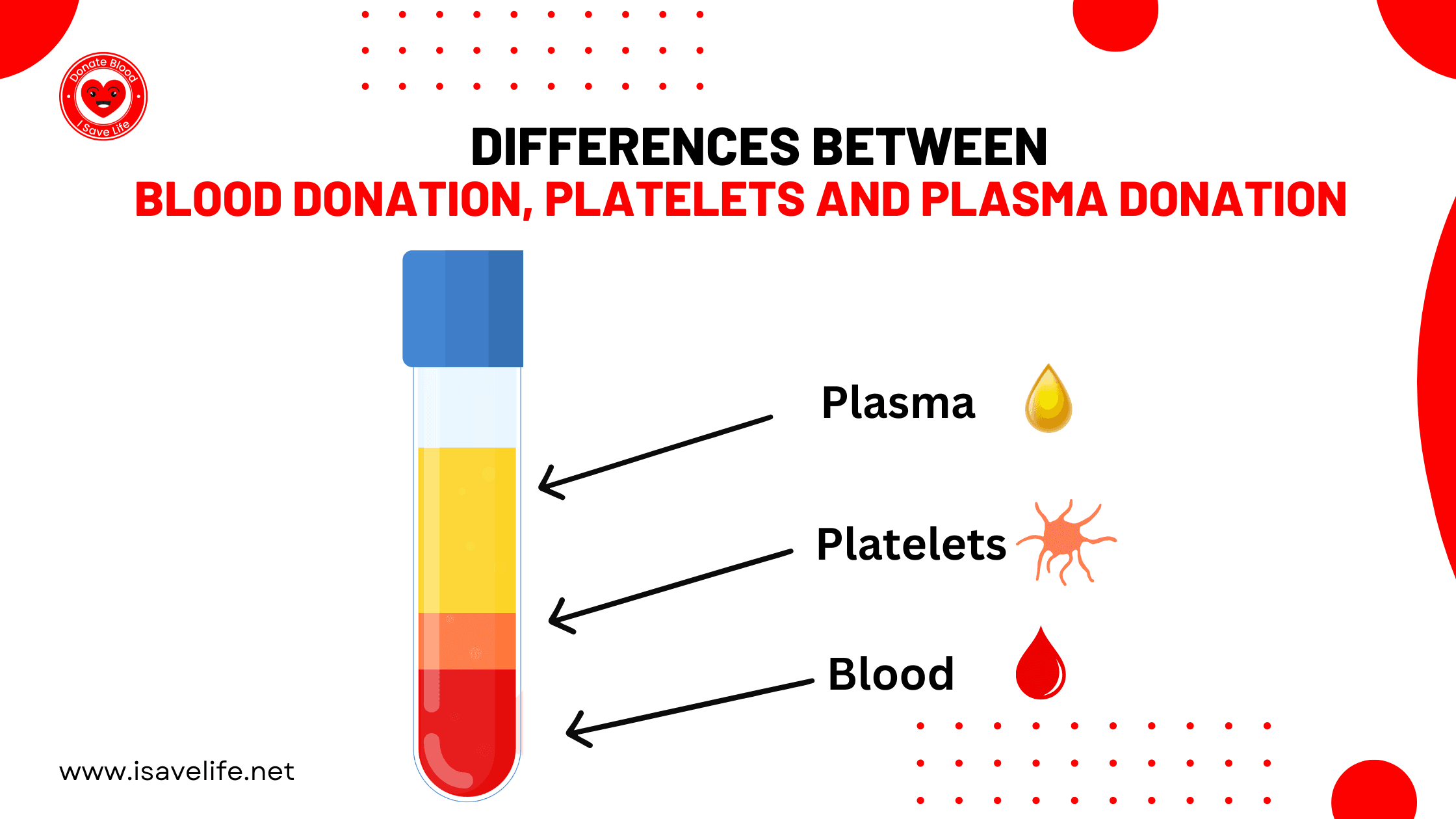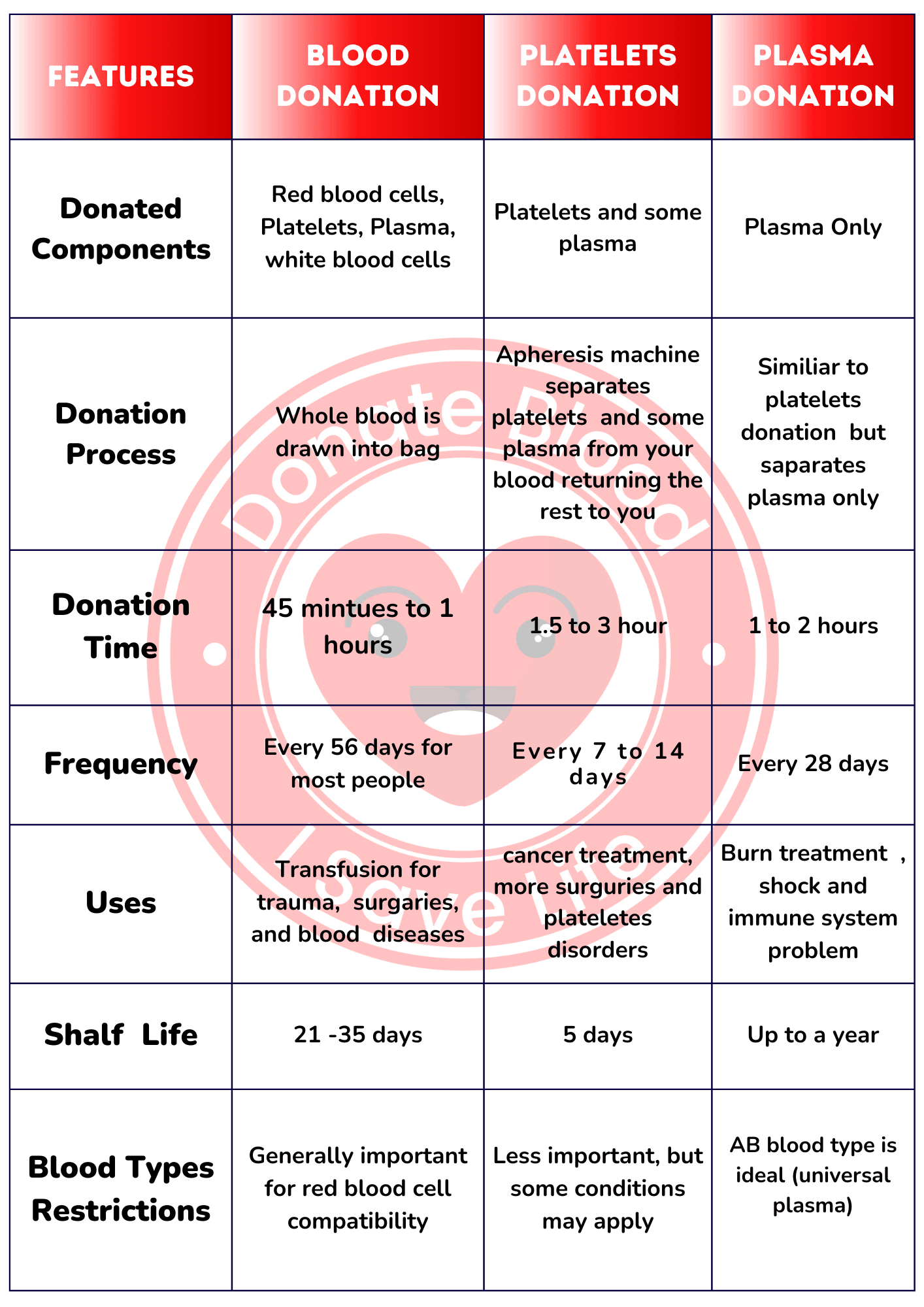
Difference Between Blood Donation, Platelets and Plasma Donation
27-Mar-2024
Have you wondered about the different components of blood and they can be used to save lives? Blood donation, platelets, and plasma all are crucial elements of the blood donation process, each serving a unique medical treatment. Let’s delve into the key difference between these three components.
Blood Donation
Blood donation is a process of giving blood, which is composed of red blood cells, white blood cells, platelets, and plasma. It’s a simply and relatively quick procedure that can be done at donate blood centers, hospitals, or during blood drives. The blood collected is used to treat patients who have lost due to accidents, surgeries or medical conditions like amenia, or cancer.
When you donate blood, a small amount, usually around a pint, is drawn from your arm using a sterile needle. The body replishes the loss within the few weeks, making it safe to donate blood every few months. Blood donation is crucial for saving lives, as donated blood can be separated into its components and used to treat various medical conditions.
Platelets Donation
Platelets, also known as thrombocytes, are tiny cell fragments in the blood that help in blood clotting. They play a crucial role in stopping bleeding when you are injured. Some people have low platelets due to medical conditions like leukemia or as a side effect or chemotherapy. In such cases, they may require platelet transfusions to prevent excessive bleeding.
Platelet donation involves extracting platelets from whole blood through a process called apheresis. During this procedure, blood is drawn from one arm, passes through a machine that separates the platelets, and the returned to the donor through the other arm. Platelet donation takes longer than regular blood donation but its equally important in treating patients with clotting disordered or undergoing certain medical treatments.
Plasma Donation
Plasma is the liquid components of blood that carries various substances such as hormones, electrolytes, and proteins throughout the body. It is also contains antibodies, which are essential for fighting infections. Plasma donation involves collecting plasma from blood donors, which can then be used to produce life-saving therapies for patients with immune deficiencies, clotting disorders or burns.
Plasma donation is similar to platelets donation in that is involves apheresis to separate plasma from the rest of blood components. The remaining blood components, such as red blood cells and platelets, are returned to the during the process. Plasma donation is particularly vital of patients who rely on plasma-derived medications to manage to their medical conditions.
Differences Between Blood Donation, Platelets and Plasma Donation

Conclusion:
While blood donation, platelet donation, and plasma all involve giving part of oneself to help others, they serve different purposes in medical treatment. Blood donation provides whole blood to treat various conditions requiring blood transfusions. Platelets donation focuses on providing platelets to patients with clotting disorders, while plasma donation supplies plasma from the production of life saving therapies. Each types of playing crucial role in saving lives and improving the health of those in need. Whether you are choose to donate blood, platelets, plasma, know that your contributions can make a significant difference in someone’s life.